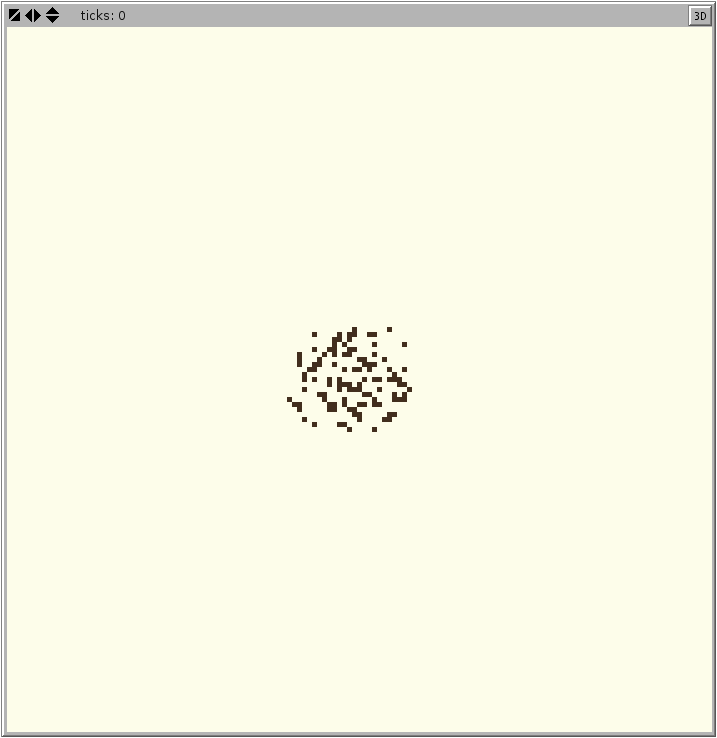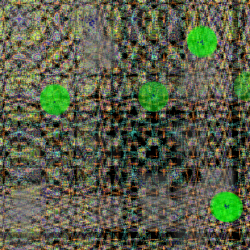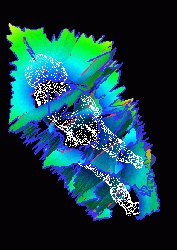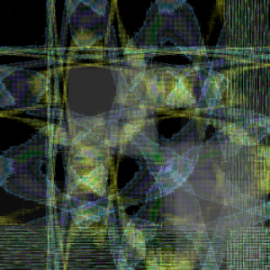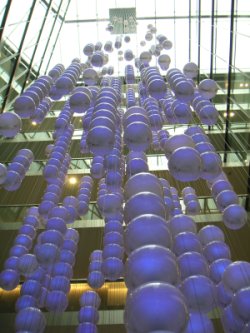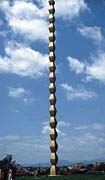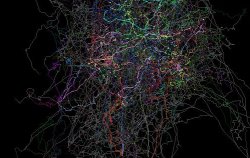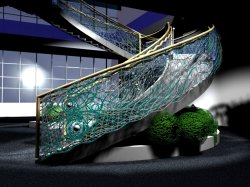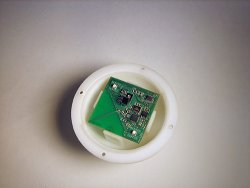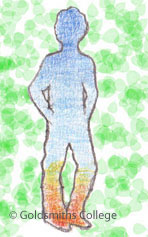with some description of their main project
and a link to their webpage or project entry point.
MSc/MFA Lecturers, from Goldsmiths and beyond, are listed afterward
with a pointer to their main research subject
related to their teaching topic.
MFA CSA & MSc AC -- Students
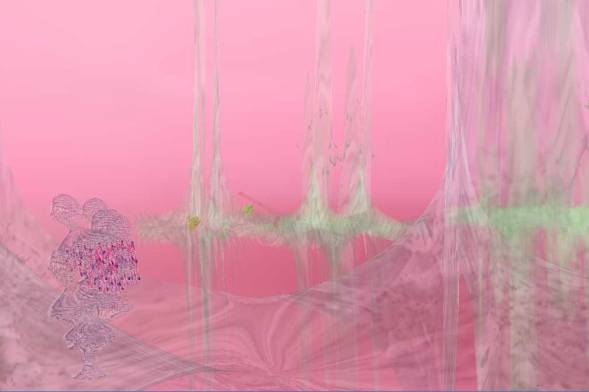 Still from Xtnz. |
Antunes,
Rui Filipe
|
Xtnz Xtnz, is focused on the exploration of the possibilities of artificial life and human presence in the context of art : The development of an ecosystem based on a real-time 3D system sustaining a “living” virtual environment. The entities of this virtual population should be active, responsive, behave and interact each other, reproducing according eventual interactions and changing properties such as visual appearance or dimensions. The interactive experience is produced via a sensitive rug connected to a computer filtering user input movements and generating a graphical output projected from above onto a screen surface around the carpet. |
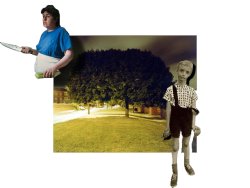 Image elements included in this mosaic: (i) Richard Billingham, Untitled 1, Black Country 2003, (ii) Philip Lorca DiCorcia, Hartford, 1989, (iii) Diane Arbus, Child With Toy HandGrenade In Central Park, 1962. |
Atskakanis,
Thanos
|
EIKE EIKE* is an art of appropriation software that is based on the idea of the visualisation of text. It uses image elements cropped from famous photographer's works, which are previously downloaded from the WWW and stored in a database to "translate" the inputed text of the user into visuals. This transformation is based on 3 word contributors that come from the connection of them with the images: words that physically describe the image element, words that are connected with the sociological aspects of the image (including the artist's opinion) and words that I have connected with the image (my own opinion). The final result is a real-time constructed collage of these elements. *EIKE: EIkona – KEimeno (image – text). |
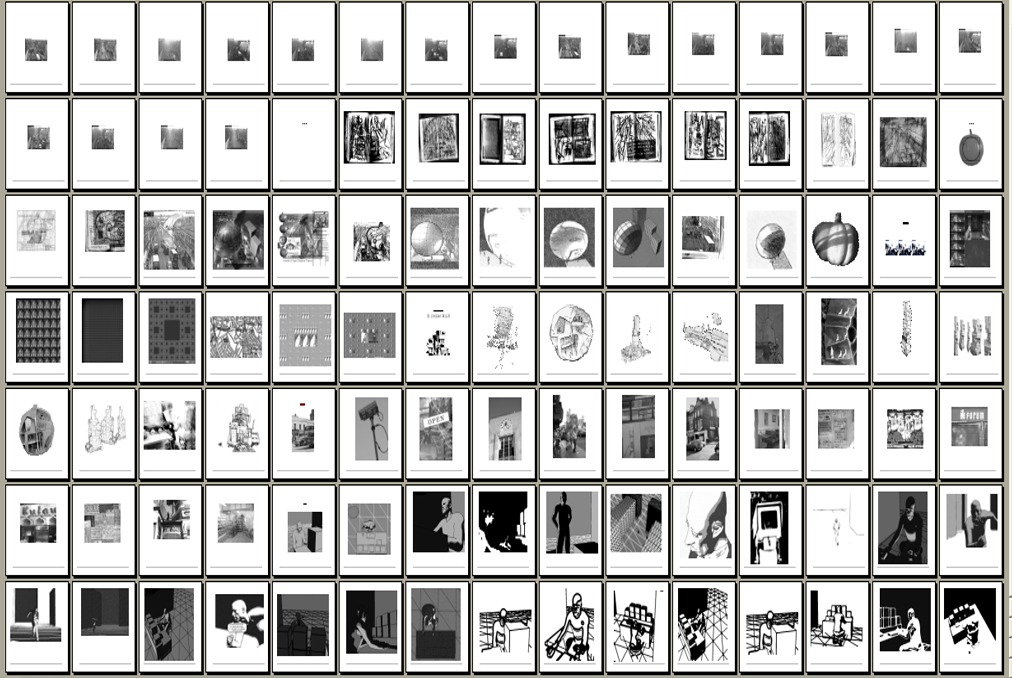 |
Dare,
Eleanor
|
Noisemedia: An Intermedia Expert System All books should be intelligent, but how can an artist's book be produced that uses techniques more commonly deployed in business intelligence and tele-medicine to analyse readers and learn from them? The aim of this project is to answer that question, to discover how it is possible to create an artist's book mediated by an expert system. |
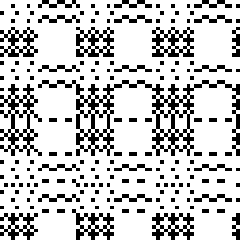 Stills from "8bitpatterns." |
Eisl,
Maria |
8bitpattern
– Virtual textile prints Permeating between art, images, fashion and design, this project called ‘8bitpattern’ takes fashion print design into the world of 3D computer graphics. 8bitpatterns are black-and-white bitmap moving pixel patterns that become animated through resizing algorithms. These effects are replicated in 3D space, resulting in distortions and patterns that form the basis of my project and the visual experiments in 3D. For the implementation I use a 3D laser scanner to scan draped fabric swatches and then map 8bitpatterns onto these meshes. |
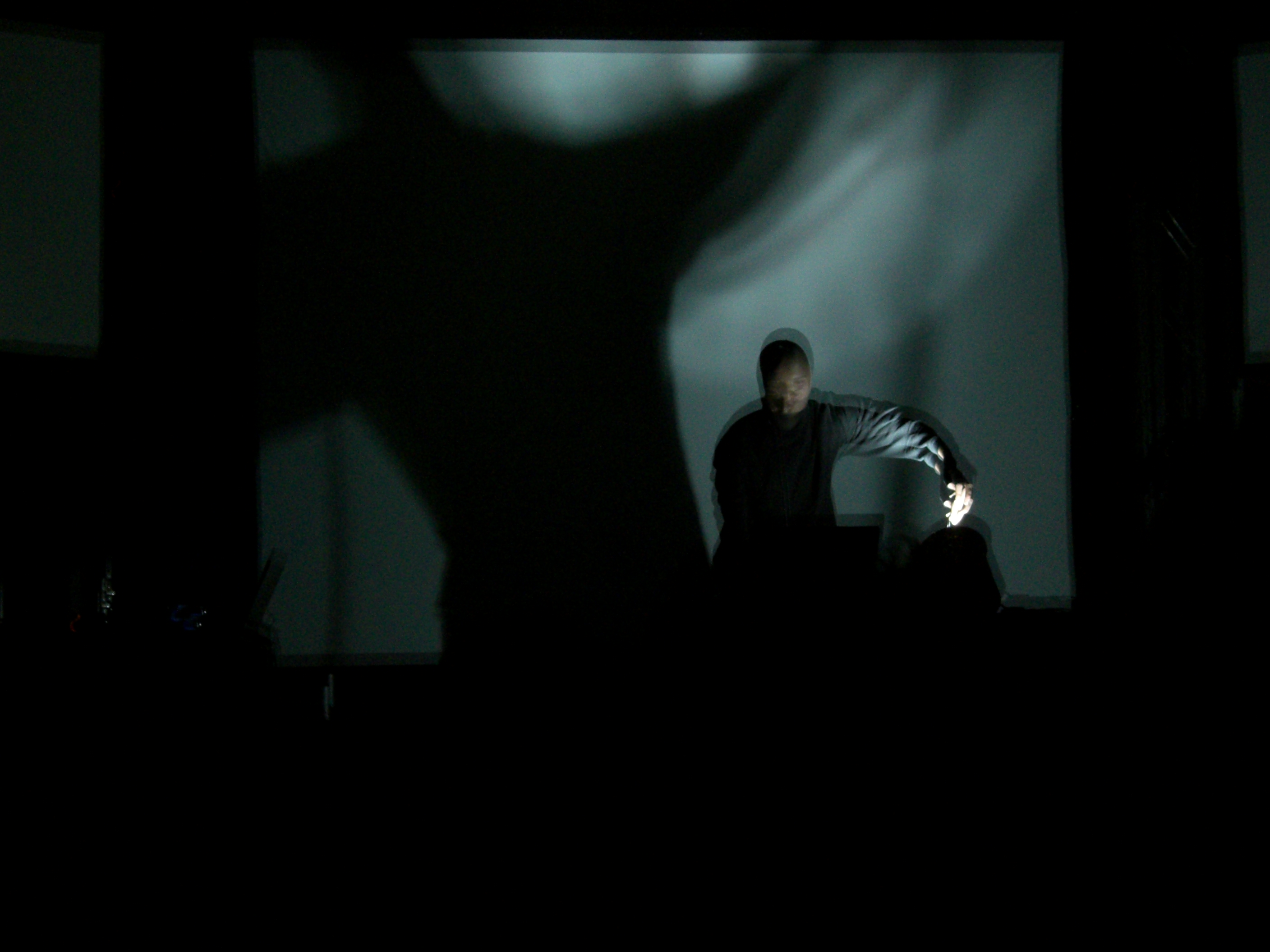 Photo from live performance with sensors and strobe lights at The Roundhouse Theatre, London, 2008. |
Jordan,
Ryan
|
Sensory Response Systems Sensory Response Systems is an exploration into audio-visual performance using an array of sensors and controllers responsive to physical movements. It also explores the reshaping and replication of the body through the use of fabrics, textiles and technologies in order for the performer to fully embody and 'become' the instrument. The overall aim is to bring a more direct and immediate relationship and control over the sound and images being generated, and to allow for full body expression and intimacy between performer and instrument (computer). |
 Interframe spiral patterns. |
Karanika,
Myrto |
Kaleidoscope : An Attempt to Animate the Chaotic Behaviour of a Dynamical System Kaleidoscope generates a discrete dynamical system and animates its interframe chaotic spatial behaviour in an attempt to approach patterns as models of reoccurring motifs, events or states that involve a great level of predictability but at the same time are subject to unexpected regeneration. The system's sensitive dependence on internal parameters produces a variety of spiral formations that beautifully illustrate patterns' embodied qualities of repetition and indeterminate modification. |
 Photo Album application. |
Liang,
Lin |
Photo Album In light of a key driver of the photo browsing experience, this application is not only featuring eye-catching layouts, but melding a wider set of versatile functionalities. Until recently, the photo browsing web pages has been a kind of "dark art" that provided a very basic functionality. With the releasing of this application, it has changed that picture into not only merely giving natural photo browsing behaviour a superficial makeover, but fundamentally rethinking the browsing photo on the web as we know it from the ground up. |
 Illustration of auto-stereoscopy (here a Sharp LL151-3D LCD display) with potential in website design. |
Lusted,
Mark
|
Stereoscopic Websites With the steady increase in the maturity of autostereoscopic LCD display technology and a correlating reduction in its cost to consumers, many (but not all) of the barriers to widespread adoption of such displays for use with personal computers have been removed. As such, my project focuses on producing websites optimised for such displays, exploring the possibilities for representing traditional website data (whether it be news, sport, academic journals or train times) in new and interesting ways which take advantage of the extra dimension that these displays provide. |
 Example of real-time live programming with feedback.pl to generate sounds, rhythms, music. |
McLean,
Alex
|
feedback.pl Feedback.pl is an interactive text editor for writing live Perl scripts. Rather that using some user interface, programs written using feedback.pl are controlled by editing their sourcecode. The programs run while they are being edited, picking up changes without restarting. Further, the program can edit its own sourcecode, putting comments in to let the programmer know what it's up to. Used primarily for musical performance as part of the livecode group "slub," where algorithms are created and modified to drive a crowd wild. |
|
Hive
- animated gif showing evolution of comb pattern from day 1 to day 98.
|
Meintjes,
Roger |
Hive Hive is a cellular automaton model of the pattern formation process in honeybee colonies. The model explores the behavioral rules which produce the characteristic comb patterns of a central brood area, surrounded by concentric rings of pollen and honey. |
 |
Papageorgiou,
Artemis
|
Fractals & Networks as Strategies in Urban Design |
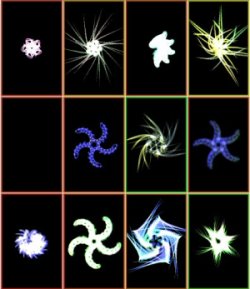 |
Todd,
Peter
|
xinaesthetic Xinaesthetic is an application for the exploration of the parameter space of a graphics synthesiser. Your motions (gestures) are followed and used to determine the fitness function of a genetic algorithm which breeds new offspring to replace those you do not pay attention to. |
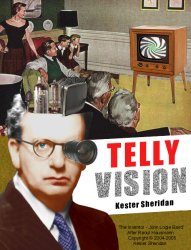 Front cover of Kester's MSc thesis. Created after Raoul Hausmann’s photomontage entitled "Tatlin At Home" (1920). John Logie Baird was one of the pioneers of the television, transmitting the world’s first moving image on Oct. 30, 1925. A series of valves and cathode ray tubes make up part of his head like a cyborg. In the background a family from the 1950’s is watching a TV set on which a hypnotic pattern evokes its effect on people who are "glued" to watching it for hours each night. |
Sheridan,
Kester
|
TellyVision There is a growing trend in technology for convergence. This can also been seen in home entertainment with the convergence of the computer and television into one single entertainment centre. For me this convergence provides an interesting opportunity for the artist to truly "interrupt live television," allowing us to apply the techniques developed by video artists to the live medium of television and so interrupt the expectations of the spectator for a medium that is taken so much for granted. I developed TellyVision to give me a toolset as an artist to create such art work which challenges the spectator’s view of the medium. |
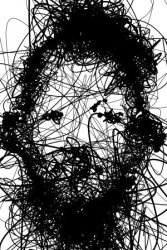 Example of a portrait automatically generated by AIKON. |
Tresset,
Patrick |
AIKON the Artistic/Automatic IKONograph "My aim is to make computers imagine our reality." AIKON is an automated/artistic portrait sketcher. A project aiming at imitating the processes involved when sketching a portrait. AIKON is based on an understanding of human perception, understanding of the artistic processes, and advances made in computer vision. |
